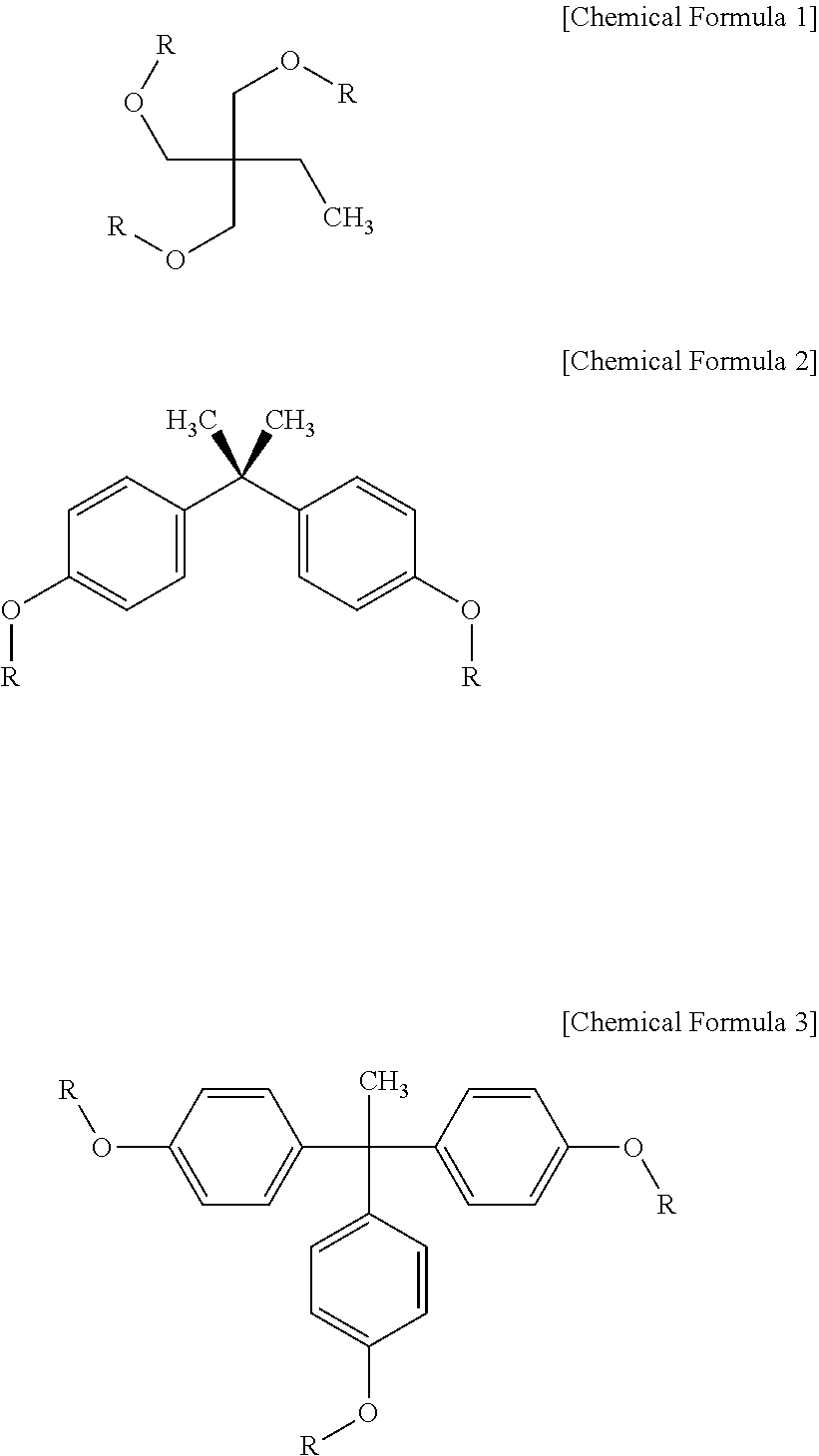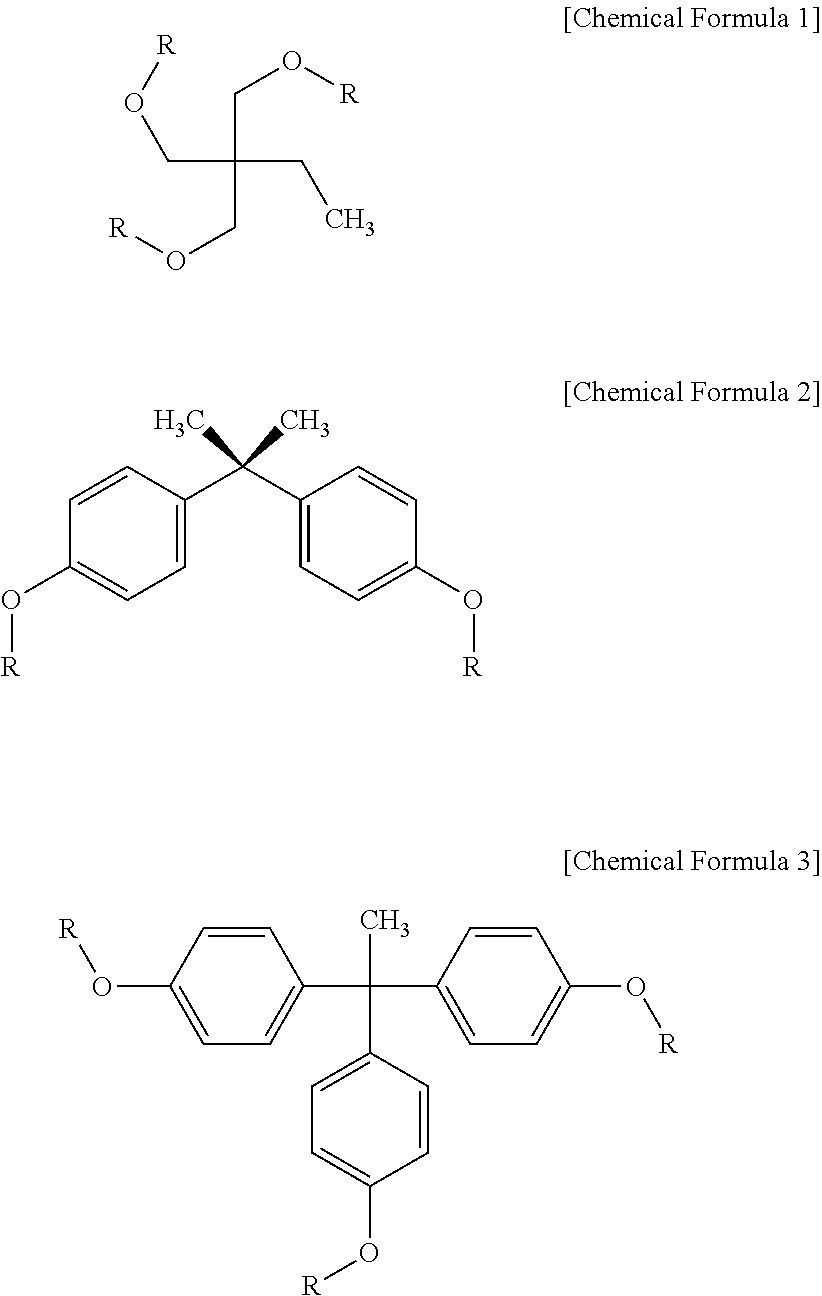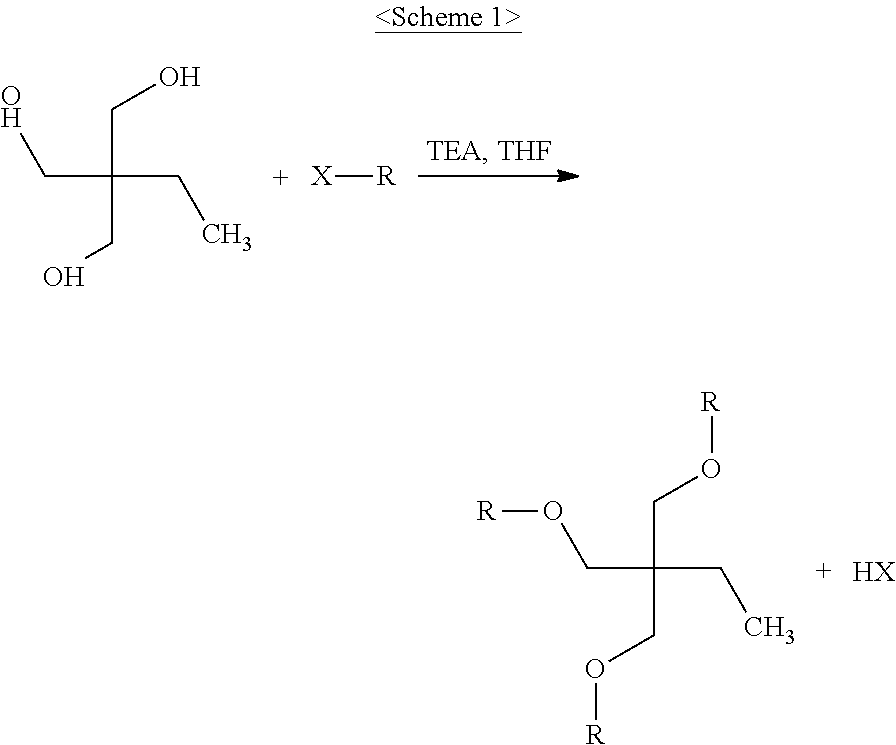Negative photoresist composition for KrF laser for forming semiconductor patterns
a technology of negative photoresist and semiconductor pattern, which is applied in the direction of photomechanical treatment, photosensitive materials for photomechanical apparatuses, instruments, etc., can solve the problems of unsatisfactory development of next-generation arf photoresists, inability to form desired shapes, and deterioration of profile, etc., to achieve excellent profile, high transparency, and high resolution
- Summary
- Abstract
- Description
- Claims
- Application Information
AI Technical Summary
Benefits of technology
Problems solved by technology
Method used
Image
Examples
substitution example 1
[0056]In a three-neck 500 ml round-bottom flask equipped with an argon reflux device, 13.4 g of 2-ethyl-2-hydroxymethyl-1,3-propanediol, 52.2 g of triethylamine and 200 ml of anhydrous tetrahydrofuran were placed and stirred using a magnetic bar. Stirring was performed for 10 min in an argon atmosphere, after which 31.6 g of acryloyl chloride was slowly added over 10 min using a dropping funnel and then stirred at room temperature for 2 hr, and the resulting reaction product was filtered and then washed with water two times. The filtered product was completely dissolved in 150 ml of chloroform and then purified five times using a 500 ml separatory funnel. Thereafter, the product, dissolved in chloroform, was further purified through column chromatography using a solvent comprising methylene chloride and hexane at a content ratio of 1:1 to remove unreacted materials, ultimately yielding a white solid product having a weight average molecule weight of 204, as represented by Chemical F...
substitution example 2
[0057]In a three-neck 500 ml round-bottom flask equipped with an argon reflux device, 22.8 g of bisphenol A, 37.2 g of triethylamine and 200 ml of anhydrous tetrahydrofuran were placed and stirred using a magnetic bar. Stirring was performed for 10 min in an argon atmosphere, after which 22.6 g of acryloyl chloride was slowly added over 10 min using a dropping funnel and then stirred at room temperature for 2 hr, and the resulting reaction product was filtered and then washed with water two times. The filtered product was completely dissolved in 150 ml of chloroform and then purified five times using a 500 ml separatory funnel. Thereafter, the product, dissolved in chloroform, was further purified through column chromatography using a solvent comprising methylene chloride and hexane at a content ratio of 1:1 to remove unreacted materials, ultimately yielding a white solid product having a weight average molecule weight of 298, as represented by Chemical Formula 2 (R: acryloyl). Base...
substitution example 3
[0058]In a three-neck 500 ml round-bottom flask equipped with an argon reflux device, 30.6 g of 1,1,1-tri(4-hydroxyphenyl)ethane, 52.2 g of triethylamine and 200 ml of anhydrous tetrahydrofuran were placed and stirred using a magnetic bar. Stirring was performed for 10 min in an argon atmosphere, after which 31.6 g of acryloyl chloride was slowly added over 10 min using a dropping funnel and then stirred at room temperature for 2 hr, and the resulting reaction product was filtered and then washed with water two times. The filtered product was completely dissolved in 150 ml of chloroform and then purified five times using a 500 ml separatory funnel. Thereafter, the product, dissolved in chloroform, was further purified through column chromatography using a solvent comprising methylene chloride and hexane at a content ratio of 1:1 to remove unreacted materials, ultimately yielding a white solid product having a weight average molecule weight of 376, as represented by Chemical Formula ...
PUM
| Property | Measurement | Unit |
|---|---|---|
| wavelength range | aaaaa | aaaaa |
| wavelength | aaaaa | aaaaa |
| size | aaaaa | aaaaa |
Abstract
Description
Claims
Application Information
 Login to View More
Login to View More - R&D
- Intellectual Property
- Life Sciences
- Materials
- Tech Scout
- Unparalleled Data Quality
- Higher Quality Content
- 60% Fewer Hallucinations
Browse by: Latest US Patents, China's latest patents, Technical Efficacy Thesaurus, Application Domain, Technology Topic, Popular Technical Reports.
© 2025 PatSnap. All rights reserved.Legal|Privacy policy|Modern Slavery Act Transparency Statement|Sitemap|About US| Contact US: help@patsnap.com



